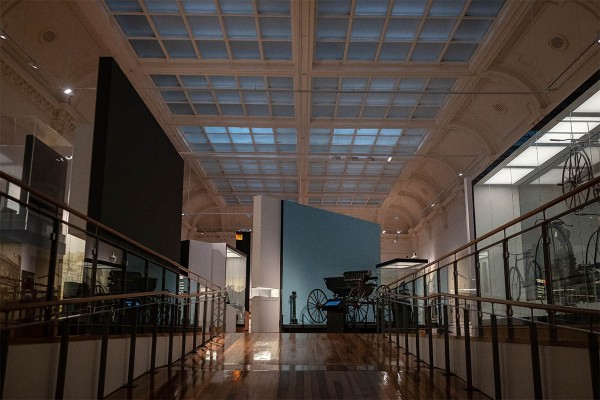The Otago Settlers Museum is New Zealand’s oldest history museum, and it’s hard to miss. The Museum spans across a huge portion of land from the Train Station to the Chinese Gardens, and the Museum itself was established to reflect colonial settlement.
Starting off as the Otago Early Settlers Museum, there was a clear focus on settlers pre and post-colonisation, however they soon felt that this didn’t clearly reflect the growing numbers of diverse people within the Otago region.
The Museum focus soon shifted to the social history of Dunedin, and aimed to include more recognition to mana whenua of the rohe. They also highlighted the need to recognise other cultures that were becoming prominent in the area and display pieces that reflect the population as a whole, especially after joining the Dunedin City Council in 1992.
In the 1990s, there became a shift towards acknowledging Kāi Tahu and showcasing history surrounding the iwi within the Museum. Notably, Bill Dacker’s landmark history of Otago Kāi Tahu Te Mamae Me Te Aroha was established in 1994 to mark the 150th anniversary of the sale of the Otago Block. Additionally, the display Kai Tahu Whanui Ki Otago was developed alongside, and they believed this provided a dedicated space at the entrance to give Kāi Tahu perspectives on the history of Otago.
By 2012, the Settlers Museum had undergone a large makeover to address past, present and future people of Otago. Toitū Museum director Cam McCracken said that the Museum did “rebrand itself as Toitῡ Otago Settlers Museum. The new name implicitly acknowledged mana whenua and their long history in this landscape, as well as the Pākehā pioneers who founded Dunedin.”
The name ‘Toitū’ was chosen during the redevelopment by Dunedin locals, as it is the name of the awa that runs underneath the Museum. Rua McCallum, who has been involved with the museum for 20 years, including on the Kāi Tahu advisory, said “Dunedinites were asked to participate in the name they felt should be given to the Museum, and they chose the Settlers Museum. At this time the name Totiū was added and it now bears a name that I believe reflects both treaty partners.”
Nowadays, the Museum aims to reflect Kāi Tahu history and has active involvement by members of the iwi. McCallum highlighted key Kāi Tahu pieces within the Museum, such as “whakapapa panels showing the intermarriages between Kāi Tahu and the 'colonist'”. As well as “above these panels, a manutukutuku is suspended which was created as part of a public programme where visitors could engage in not only an artifact being created that would become part of the Museum, but take pride in learning about local culture from local Kāi Tahu artists”. She also stressed in regards to Kāi Tahu involvement that part of the gallery is “devoted to the encounters that occurred between the early settler and local Kāi Tahu” and that each exhibition is set out like a timeline. She said “as you move through this exhibition you come to whata matauraka, or a digital information storehouse,” which she expressed holds knowledge surrounding the exhibition and key areas in the region that “are important to mana whenua”.
The exhibitions are believed to be carefully considered and selected to not only ensure proper acknowledgement to Otago history, but also reflect non-Pākehā cultures within the rohe. The staff and board of the museum attempt to involve Kāi Tahu exhibitions often in order to reflect mana whenua history and allow visitors to learn more about the local iwi and their experiences. McCallum explained that “settlers are not just something from the past, but our present and future,” and therefore believes that “the wairua that exists at Toitū is very strong”.



